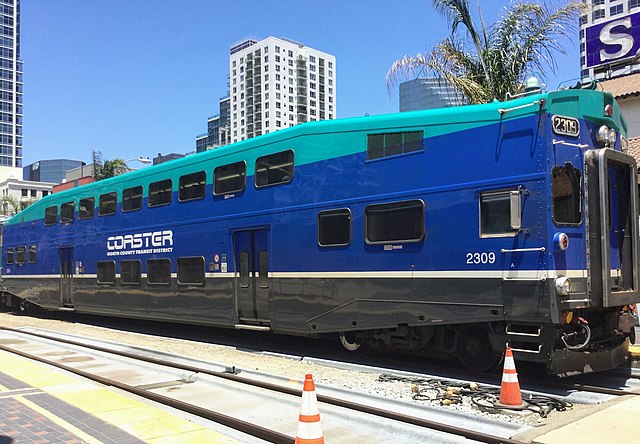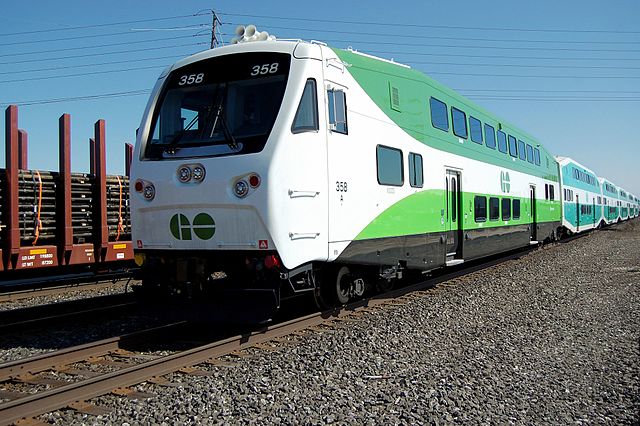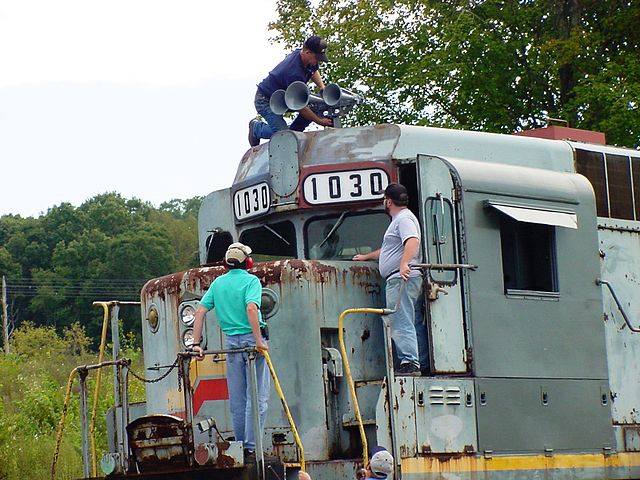A control car, cab car, control trailer, or driving trailer is a non-powered rail vehicle from which a train can be operated. As dedicated vehicles or regular passenger cars, they have one or two driver compartments with all the controls and gauges required to remotely operate the locomotive, including exterior locomotive equipment such as horns, bells, ploughs, and lights. They also have communications and safety systems such as GSM-R or European Train Control System (ETCS). Control cars enable push-pull operation when located on the end of a train opposite its locomotive by allowing the train to reverse direction at a terminus without moving the locomotive or turning the train around.
Modern German InterCity Steuerwagen control car
An NCTD Coaster Bombardier Bi-Level cab car in Santa Fe Depot.
A GO Transit train with a cab car in Brampton, Ontario
Amtrak NPCU No. 90221 on the Hiawatha Service
A train horn is an air horn used as an audible warning device on diesel and electric-powered trains. Its primary purpose is to alert persons and animals to an oncoming train, especially when approaching a level crossing. They are often extremely loud, allowing them to be heard from great distances. They are also used for acknowledging signals given by railroad employees, such as during switching operations. For steam locomotives, the equivalent device is a train whistle.
Leslie S-5T train horn being fitted to a restored ex-Seaboard System EMD GP30 diesel locomotive at the 2006 Oak Ridge Horn Honk and Collectors Meet
Train horns are made of multiple horn units called chimes which produce different notes; sounded together they make a chord. The Nathan model M5 pictured is a 5 chime horn.
Leslie RS3L locomotive horn, once the most common horn in use on North American railroads
Diagram of a typical locomotive air horn power chamber, showing operation








